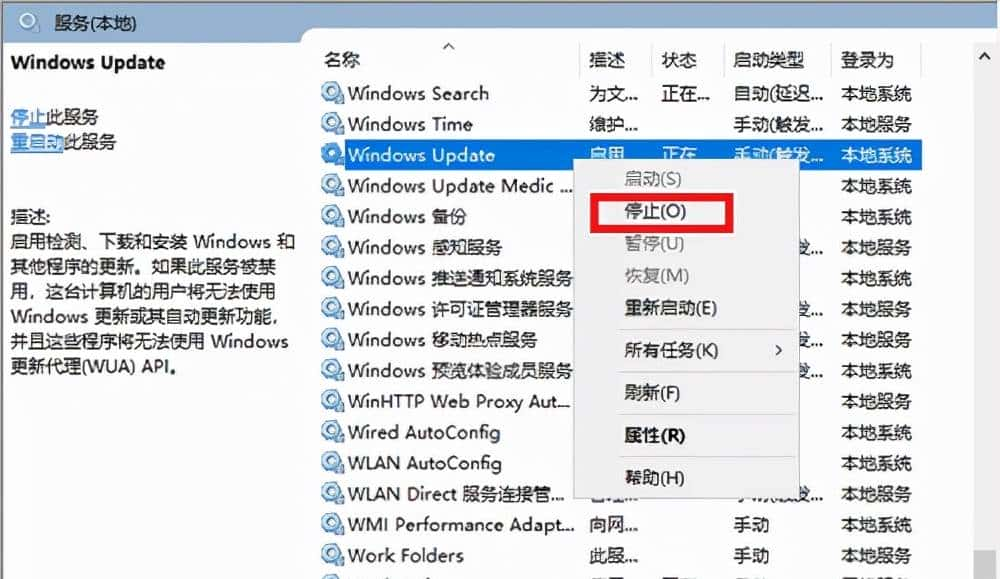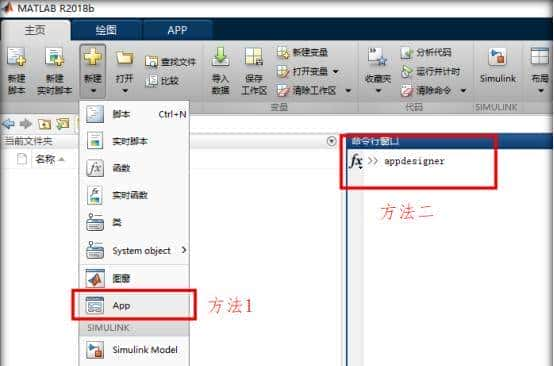
引言
在当今软件开发领域,高性能计算已成为关键需求。虽然现代处理器主频提升遇到物理限制,但通过增加核心数量和优化内存访问架构,计算性能仍在持续增长。其中,CPU缓存架构对程序性能的影响远超许多开发者的认知。作为Java开发者,我们身处高级抽象的虚拟机环境中,但若不了解底层硬件的工作原理,很可能编写出性能低下的代码。本文将深入探讨CPU缓存的工作机制,分析缓存未命中带来的性能影响,并通过大量Java代码示例展示如何编写对缓存友善的高性能代码。
第一部分:CPU缓存体系结构深度解析
1.1 为什么需要CPU缓存
现代处理器速度与主内存访问速度之间存在巨大差距,一般称为”内存墙”(Memory Wall)。CPU执行指令和计算数据的速度比从主内存读取数据快100倍以上。这种速度差异会导致处理器大部分时间处于等待数据的状态,极大浪费计算能力。
CPU缓存作为处理器和主内存之间的高速缓冲区,解决了这个瓶颈问题。缓存采用比主内存更快的存储技术(SRAM),存储容量较小但访问速度接近CPU频率,有效减少了处理器等待数据的时间。
1.2 多级缓存架构
现代CPU采用多级缓存结构,一般分为L1、L2和L3三级缓存:
- L1缓存:速度最快,容量最小(一般32-64KB),分为指令缓存和数据缓存,每个核心独享
- L2缓存:速度较快,容量较大(一般256-512KB),每个核心独享,同时存储指令和数据
- L3缓存:速度较慢,容量最大(一般几MB到几十MB),所有核心共享
这种分级设计基于”局部性原理”,包括时间局部性(最近访问的数据很可能再次被访问)和空间局部性(相邻的内存位置很可能被一起访问)。
1.3 缓存行(Cache Line)的概念
缓存不是以单个字节为单位进行操作的,而是以”缓存行”为基本单位。典型缓存行大小为64字节。当CPU需要访问某个内存地址时,会将整个缓存行从主内存加载到缓存中。这意味着访问一个int变量(4字节)实际上会加载其周围的60字节数据到缓存。
java
// 缓存行示例代码
public class CacheLineDemo {
// 假设缓存行大小为64字节
private static final int CACHE_LINE_SIZE = 64;
// 两个变量可能位于同一个缓存行
private static volatile long variableA;
private static volatile long variableB;
// 填充字段,确保variableA和variableB不在同一个缓存行
private static volatile long[] padding = new long[8]; // 8*8=64字节
public static void main(String[] args) {
// 测试伪共享现象
Thread threadA = new Thread(() -> {
long start = System.currentTimeMillis();
for (int i = 0; i < 100000000; i++) {
variableA = i;
}
System.out.println("Thread A time: " + (System.currentTimeMillis() - start) + "ms");
});
Thread threadB = new Thread(() -> {
long start = System.currentTimeMillis();
for (int i = 0; i < 100000000; i++) {
variableB = i;
}
System.out.println("Thread B time: " + (System.currentTimeMillis() - start) + "ms");
});
threadA.start();
threadB.start();
}
}1.4 缓存关联性
缓存映射策略决定了主内存地址与缓存位置的对应关系:
- 直接映射:每个内存块只能映射到缓存中的一个特定位置
- 全相联映射:内存块可以映射到缓存中的任意位置
- 组相联映射:折中方案,缓存分为多个组,内存块可以映射到特定组中的任意位置
现代CPU一般采用组相联映射,在灵活性和硬件复杂度之间取得平衡。
第二部分:缓存未命中的类型与性能影响
2.1 缓存未命中的三种类型
强制性未命中(Compulsory Miss):第一次访问某个内存地址时必然发生的未命中,也称为冷启动未命中。
容量未命中(Capacity Miss):由于缓存容量有限,当工作集大小超过缓存容量时发生的未命中。
冲突未命中(Conflict Miss):在组相联或直接映射缓存中,多个内存块映射到同一个缓存组导致的未命中。
2.2 缓存未命中的代价
不同级别的缓存未命中具有不同的时间代价(典型值):
- L1缓存命中:约1纳秒
- L2缓存命中:约4纳秒
- L3缓存命中:约10纳秒
- 主内存访问:约100纳秒
这意味着一次主内存访问的时间可以执行数百条CPU指令。减少缓存未命中是优化程序性能的关键。
第三部分:Java内存模型与CPU缓存
3.1 Java内存模型(JMM)简介
Java内存模型定义了线程如何与内存交互,以及线程之间如何通过内存进行通信。JMM抽象了底层硬件差异,为Java程序提供一致的内存访问语义。
3.2 缓存一致性协议
多核处理器使用缓存一致性协议(如MESI)来保持各个核心缓存中的数据一致性。MESI代表缓存的四种状态:
- Modified(修改):缓存行已被修改,与主内存不一致
- Exclusive(独占):缓存行与主内存一致,且只存在于当前缓存
- Shared(共享):缓存行与主内存一致,且可能存在于多个缓存
- Invalid(无效):缓存行数据已过期,不能使用
3.3 内存屏障与volatile关键字
Java中的volatile关键字会在读写操作前后插入内存屏障,保证可见性和有序性:
java
public class MemoryBarrierDemo {
private static volatile boolean flag = false;
private static int value = 0;
public static void main(String[] args) {
Thread writer = new Thread(() -> {
value = 42;
flag = true; // 写屏障,保证之前的写操作对后续读操作可见
});
Thread reader = new Thread(() -> {
while (!flag) {
// 循环等待
}
// 读屏障,保证看到writer线程的所有写操作
System.out.println("Value: " + value);
});
reader.start();
writer.start();
}
}第四部分:编写缓存友善代码的Java实践
4.1 数据局部性优化
原则:尽量让连续访问的数据在内存中也连续存储
java
// 不佳的实现:跳跃式访问
public class PoorLocality {
private static class Data {
int value;
int[] unrelated = new int[1000]; // 大量不相关数据
}
private static Data[] array = new Data[100000];
static {
for (int i = 0; i < array.length; i++) {
array[i] = new Data();
}
}
public static long sumValues() {
long sum = 0;
for (int i = 0; i < array.length; i++) {
sum += array[i].value; // 缓存不友善:每次访问都要加载大量不相关数据
}
return sum;
}
}
// 优化的实现:数据连续存储
public class GoodLocality {
private static int[] values = new int[100000];
private static int[][] unrelated = new int[100000][1000]; // 分离不相关数据
static {
for (int i = 0; i < values.length; i++) {
values[i] = i;
}
}
public static long sumValues() {
long sum = 0;
for (int i = 0; i < values.length; i++) {
sum += values[i]; // 缓存友善:连续访问连续存储的数据
}
return sum;
}
}4.2 避免伪共享(False Sharing)
伪共享是多线程编程中常见的性能杀手,当多个线程修改位于同一缓存行的不同变量时,会导致缓存行无效化,即使这些变量在逻辑上并不相关。
java
// 伪共享示例
public class FalseSharingDemo {
// 两个频繁写的计数器
private static volatile long counter1 = 0;
private static volatile long counter2 = 0;
public static void main(String[] args) throws InterruptedException {
// 测试伪共享的性能影响
long start = System.currentTimeMillis();
Thread t1 = new Thread(() -> {
for (int i = 0; i < 100000000; i++) {
counter1++;
}
});
Thread t2 = new Thread(() -> {
for (int i = 0; i < 100000000; i++) {
counter2++;
}
});
t1.start();
t2.start();
t1.join();
t2.join();
long duration = System.currentTimeMillis() - start;
System.out.println("Duration: " + duration + "ms");
}
}
// 解决伪共享:使用填充确保变量不在同一缓存行
public class FalseSharingSolution {
// 计数器1及其填充
private static volatile long counter1 = 0;
private static volatile long p1, p2, p3, p4, p5, p6, p7; // 填充56字节
// 计数器2及其填充
private static volatile long counter2 = 0;
private static volatile long p8, p9, p10, p11, p12, p13, p14; // 填充56字节
public static void main(String[] args) throws InterruptedException {
// 测试解决伪共享后的性能
long start = System.currentTimeMillis();
Thread t1 = new Thread(() -> {
for (int i = 0; i < 100000000; i++) {
counter1++;
}
});
Thread t2 = new Thread(() -> {
for (int i = 0; i < 100000000; i++) {
counter2++;
}
});
t1.start();
t2.start();
t1.join();
t2.join();
long duration = System.currentTimeMillis() - start;
System.out.println("Duration: " + duration + "ms");
}
}4.3 Java 8的@Contended注解
Java 8引入了@Contended注解来解决伪共享问题,它会自动在字段间添加填充:
java
import sun.misc.Contended;
public class ContendedExample {
// 使用@Contended注解避免伪共享
@Contended
private static volatile long counter1 = 0;
@Contended
private static volatile long counter2 = 0;
public static void main(String[] args) throws InterruptedException {
// 测试代码同上
}
}注意:@Contended默认只在JDK内部类中有效,普通代码需要使用-XX:-RestrictContended参数启用。
4.4 对象内存布局优化
了解Java对象内存布局有助于优化内存访问模式:
java
public class ObjectLayoutOptimization {
// 不佳的对象设计
private static class PoorDesign {
boolean flag;
int id;
double value;
boolean anotherFlag;
// 对象布局可能为:flag(1) + 填充(3) + id(4) + value(8) + anotherFlag(1) + 填充(7) = 24字节
}
// 优化的对象设计:将一样类型的字段分组
private static class GoodDesign {
int id; // 4字节
double value; // 8字节
boolean flag; // 1字节
boolean anotherFlag; // 1字节
// 对象布局可能为:id(4) + value(8) + flag(1) + anotherFlag(1) + 填充(2) = 16字节
}
// 进一步优化:使用紧凑字段排列减少缓存行占用
private static class CompactDesign {
int id; // 4字节
boolean flag; // 1字节
boolean anotherFlag; // 1字节
// 填充2字节使对象大小为8的倍数
double value; // 8字节
// 对象布局:id(4) + flag(1) + anotherFlag(1) + 填充(2) + value(8) = 16字节
}
}4.5 数组访问优化
数组是Java中最高效的数据结构之一,但需要注意访问模式:
java
public class ArrayAccessOptimization {
private static final int SIZE = 10000;
private static int[][] matrix = new int[SIZE][SIZE];
// 不佳的访问模式:按列访问(缓存不友善)
public static long sumColumns() {
long sum = 0;
for (int col = 0; col < SIZE; col++) {
for (int row = 0; row < SIZE; row++) {
sum += matrix[row][col]; // 缓存不友善:跳跃式访问
}
}
return sum;
}
// 优化的访问模式:按行访问(缓存友善)
public static long sumRows() {
long sum = 0;
for (int row = 0; row < SIZE; row++) {
for (int col = 0; col < SIZE; col++) {
sum += matrix[row][col]; // 缓存友善:连续访问
}
}
return sum;
}
}4.6 使用内存高效的集合类
标准Java集合类并非总是最内存高效的选择:
java
import java.util.BitSet;
import java.util.HashMap;
import java.util.Map;
public class MemoryEfficientCollections {
// 使用基本类型集合避免装箱开销
public static void primitiveCollections() {
// 不佳:使用Integer列表
// List<Integer> list = new ArrayList<>(); // 每个Integer对象约16-24字节
// 更佳:使用基本类型数组
int[] array = new int[1000]; // 每个int4字节,无额外开销
// 或者使用第三方库如Eclipse Collections、FastUtil等
}
// 使用BitSet取代boolean数组或Set<Integer>
public static void bitSetExample() {
// 存储100万个标志
BitSet bitSet = new BitSet(1000000); // 约125KB内存
// 等效的HashSet<Integer>需要约1000000 * 16字节 ≈ 16MB
bitSet.set(42, true);
boolean value = bitSet.get(42);
}
// 优化Map的使用
public static void mapOptimization() {
// 预先设置大小避免扩容
Map<String, Integer> map = new HashMap<>(1000, 0.75f);
// 使用EnumMap取代HashMap对于枚举键
// 更紧凑和高效
}
}第五部分:高级优化技巧与模式
5.1 对象池与复用
减少对象分配可以降低GC压力和提高缓存局部性:
java
public class ObjectPoolDemo {
private static class ExpensiveObject {
// 假设这是一个创建成本高的对象
private byte[] data = new byte[1024];
public void reset() {
// 重置对象状态以便复用
Arrays.fill(data, (byte) 0);
}
}
// 简单的对象池实现
private static class ObjectPool {
private final Queue<ExpensiveObject> pool = new LinkedList<>();
public ExpensiveObject borrowObject() {
ExpensiveObject obj = pool.poll();
if (obj == null) {
obj = new ExpensiveObject();
}
return obj;
}
public void returnObject(ExpensiveObject obj) {
obj.reset();
pool.offer(obj);
}
}
public static void main(String[] args) {
ObjectPool pool = new ObjectPool();
// 使用对象池而不是频繁创建新对象
for (int i = 0; i < 1000; i++) {
ExpensiveObject obj = pool.borrowObject();
try {
// 使用对象
} finally {
pool.returnObject(obj);
}
}
}
}5.2 数据导向设计(Data-Oriented Design)
数据导向设计强调根据数据访问模式组织数据,而不是根据面向对象的原则:
java
// 传统面向对象方式
public class TraditionalOOP {
static class Entity {
int id;
Vector3 position;
Vector3 velocity;
Health health;
// 许多其他字段...
}
private List<Entity> entities = new ArrayList<>();
public void updatePositions() {
for (Entity entity : entities) {
// 更新位置:只访问position和velocity字段
// 但需要加载整个Entity对象到缓存,可能包含不相关的字段
entity.position.add(entity.velocity);
}
}
}
// 数据导向设计方式
public class DataOrientedDesign {
// 将数据按访问模式分组存储
static class PhysicsData {
int[] ids;
Vector3[] positions;
Vector3[] velocities;
}
static class HealthData {
int[] ids;
int[] healthPoints;
}
private PhysicsData physicsData = new PhysicsData();
private HealthData healthData = new HealthData();
public void updatePositions() {
// 只访问需要的数据,缓存友善
for (int i = 0; i < physicsData.ids.length; i++) {
physicsData.positions[i].add(physicsData.velocities[i]);
}
}
}5.3 分支预测优化
现代CPU使用分支预测来减少流水线停顿。可预测的分支模式可以提高性能:
java
public class BranchPrediction {
private static final int SIZE = 100000;
private static int[] sortedArray = new int[SIZE];
private static int[] unsortedArray = new int[SIZE];
static {
// 初始化数组
Random random = new Random();
for (int i = 0; i < SIZE; i++) {
sortedArray[i] = i;
unsortedArray[i] = random.nextInt(SIZE);
}
}
// 处理已排序数据(分支预测友善)
public static long sumSorted() {
long sum = 0;
for (int value : sortedArray) {
if (value < SIZE / 2) { // 分支预测成功率很高
sum += value;
}
}
return sum;
}
// 处理未排序数据(分支预测不友善)
public static long sumUnsorted() {
long sum = 0;
for (int value : unsortedArray) {
if (value < SIZE / 2) { // 分支预测常常失败
sum += value;
}
}
return sum;
}
// 减少分支:使用无分支代码
public static long sumWithoutBranch() {
long sum = 0;
for (int value : unsortedArray) {
// 使用位运算避免分支
int mask = (value - SIZE / 2) >> 31; // 如果value < SIZE/2,mask为全1,否则全0
sum += value & mask; // 当value >= SIZE/2时加0
}
return sum;
}
}第六部分:性能测试与监控
6.1 使用JMH进行微基准测试
Java Microbenchmark Harness (JMH) 是专门用于Java微基准测试的工具:
java
import org.openjdk.jmh.annotations.*;
import java.util.concurrent.TimeUnit;
@BenchmarkMode(Mode.AverageTime)
@OutputTimeUnit(TimeUnit.NANOSECONDS)
@State(Scope.Benchmark)
public class CacheBenchmark {
private static final int SIZE = 10000;
private int[] array = new int[SIZE * SIZE];
@Setup
public void setup() {
// 初始化数组
Random random = new Random();
for (int i = 0; i < array.length; i++) {
array[i] = random.nextInt();
}
}
@Benchmark
public long testRowMajor() {
long sum = 0;
for (int row = 0; row < SIZE; row++) {
for (int col = 0; col < SIZE; col++) {
sum += array[row * SIZE + col];
}
}
return sum;
}
@Benchmark
public long testColumnMajor() {
long sum = 0;
for (int col = 0; col < SIZE; col++) {
for (int row = 0; row < SIZE; row++) {
sum += array[row * SIZE + col];
}
}
return sum;
}
}6.2 使用perf工具监控缓存命中率
在Linux系统上,可以使用perf工具监控程序的缓存性能:
bash
# 监控缓存命中率
perf stat -e cache-references,cache-misses java YourApplication
# 监控各级缓存命中率
perf stat -e L1-dcache-loads,L1-dcache-load-misses,L1-dcache-stores java YourApplication6.3 Java Flight Recorder与Mission Control
Java Flight Recorder (JFR) 是内置的性能分析工具:
java
public class JFRExample {
public static void main(String[] args) throws Exception {
// 启动JFR录制
startJFRRecording();
// 运行需要分析的代码
runPerformanceCriticalCode();
// 停止录制并保存数据
stopJFRRecording();
}
private static void startJFRRecording() {
// 实际代码中需要使用JFR API
}
private static void runPerformanceCriticalCode() {
// 性能关键代码
}
private static void stopJFRRecording() {
// 停止JFR录制
}
}第七部分:实际案例分析与最佳实践
7.1 高性能矩阵乘法
java
public class MatrixMultiplication {
private static final int SIZE = 1024;
private static final int BLOCK_SIZE = 64; // 与缓存行大小相关
private static double[][] a = new double[SIZE][SIZE];
private static double[][] b = new double[SIZE][SIZE];
private static double[][] c = new double[SIZE][SIZE];
// 朴素矩阵乘法(缓存不友善)
public static void multiplyNaive() {
for (int i = 0; i < SIZE; i++) {
for (int j = 0; j < SIZE; j++) {
for (int k = 0; k < SIZE; k++) {
c[i][j] += a[i][k] * b[k][j];
}
}
}
}
// 优化:循环交换提高局部性
public static void multiplyOptimized() {
for (int i = 0; i < SIZE; i++) {
for (int k = 0; k < SIZE; k++) {
double a_ik = a[i][k];
for (int j = 0; j < SIZE; j++) {
c[i][j] += a_ik * b[k][j];
}
}
}
}
// 进一步优化:分块矩阵乘法
public static void multiplyBlocked() {
for (int ii = 0; ii < SIZE; ii += BLOCK_SIZE) {
for (int jj = 0; jj < SIZE; jj += BLOCK_SIZE) {
for (int kk = 0; kk < SIZE; kk += BLOCK_SIZE) {
// 处理块
for (int i = ii; i < Math.min(ii + BLOCK_SIZE, SIZE); i++) {
for (int k = kk; k < Math.min(kk + BLOCK_SIZE, SIZE); k++) {
double a_ik = a[i][k];
for (int j = jj; j < Math.min(jj + BLOCK_SIZE, SIZE); j++) {
c[i][j] += a_ik * b[k][j];
}
}
}
}
}
}
}
}7.2 高性能缓存实现
java
public class SimpleCache<K, V> {
// 使用并发HashMap作为后端存储
private final ConcurrentHashMap<K, V> map = new ConcurrentHashMap<>();
// 使用延迟初始化减少不必要的对象创建
public V get(K key, Supplier<V> supplier) {
V value = map.get(key);
if (value == null) {
synchronized (map) {
value = map.get(key);
if (value == null) {
value = supplier.get();
map.put(key, value);
}
}
}
return value;
}
// 定期清理过期条目避免内存泄漏
public void cleanup() {
// 实现清理逻辑
}
}结论
深入理解CPU缓存的工作原理对于编写高性能Java代码至关重大。通过优化数据局部性、避免伪共享、选择合适的数据结构和算法,可以显著提高程序性能。关键要点包括:
- 优先思考数据布局和访问模式,而不仅仅是算法复杂度
- 在多线程环境中注意伪共享问题,使用填充或@Contended注解
- 利用对象池和数据复用减少内存分配和GC压力
- 使用合适的工具(如JMH、perf、JFR)进行性能分析和监控
- 思考数据导向设计,根据访问模式组织数据
缓存优化是一个需要持续学习和实践的领域。随着硬件架构的演进,优化策略也需要相应调整。通过将缓存友善性作为代码设计的重大考量因素,可以开发出在現代硬件上高效运行的Java应用程序。
记住,最优性能来自于对多个层次的优化:算法选择、数据结构设计、内存访问模式以及硬件特性利用。只有全面思考这些因素,才能编写出真正高性能的Java代码。
相关文章













